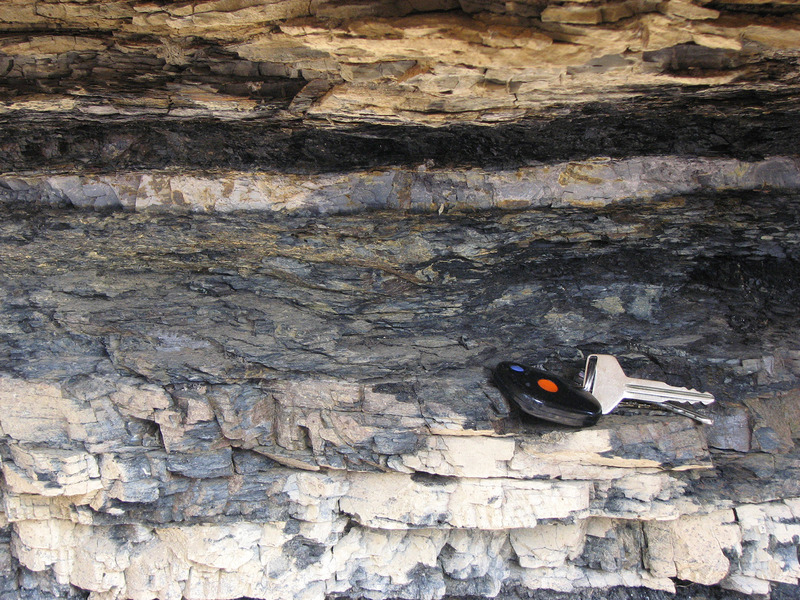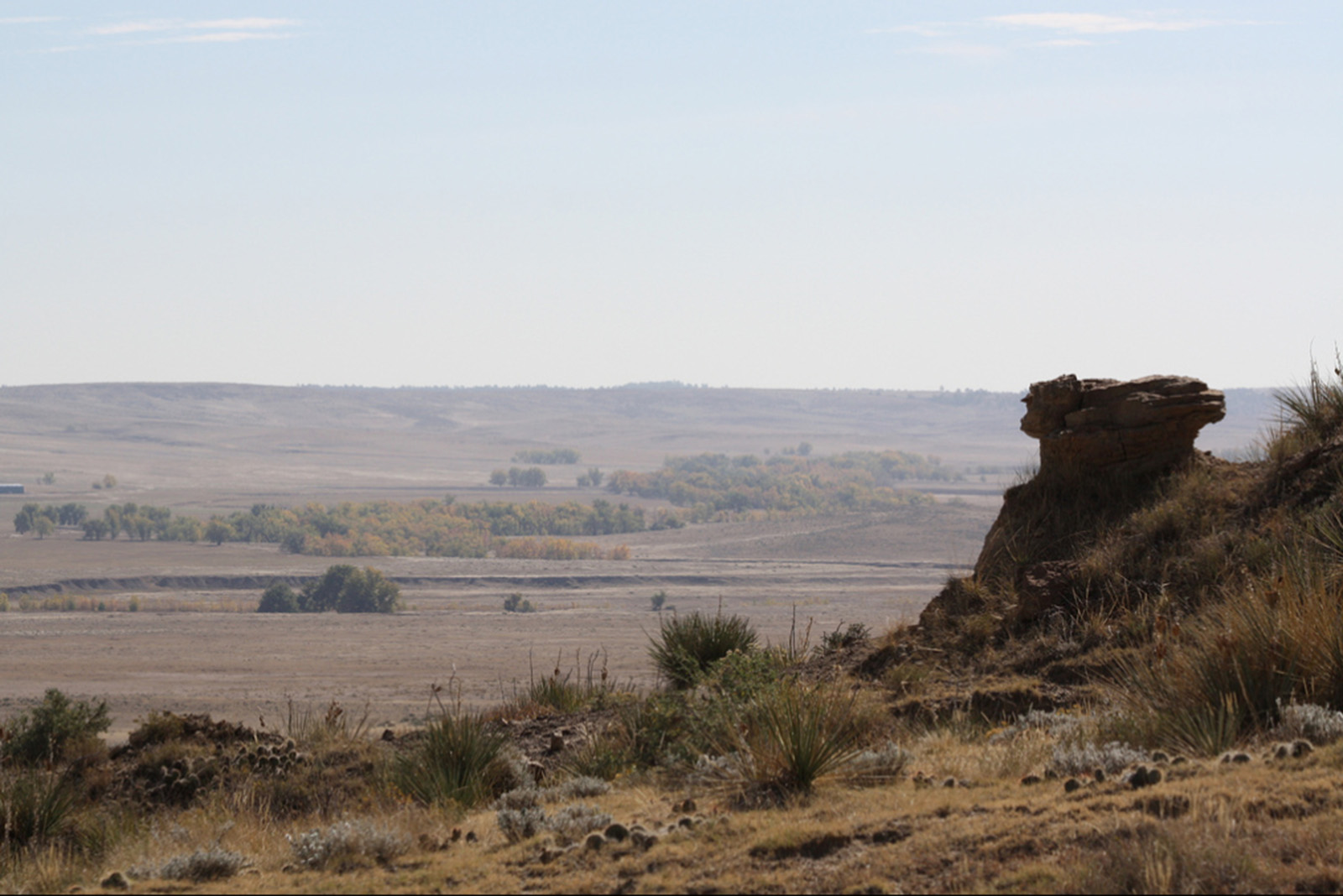The Local newsletter is your free, daily guide to life in Colorado. For locals, by locals.
When the Aurora-based Plains Conservation Center purchased just over 7,600 acres of grassland 30 miles east of Denver in the 1990s, the aim was to restore and preserve a prime parcel of shortgrass prairie. But the nonprofit, which focuses on conservation, research, and education about the high plains, also got something quite unexpected—a treasure trove of information about the extinction of the dinosaurs. The latter discovery led Secretary of Interior Sally Jewel to designate the West Bijou Site as the country’s 599th National Natural Landmark in early November.
About 65.5 million years ago, the dinosaurs (along with 70 percent of all the planet’s plant and animal species) were wiped out in the geologic blink of an eye. Because the extinction ended the time period known as the Cretaceous (abbreviated K by geologists) and raised the curtain on the succeeding Paleogene period (Pg), geologists have nicknamed the geological signatures of this time period as the “K-Pg boundary.”

For scientists to deduce the cause of the extinction, they needed to find and carefully study rock layers containing this boundary. Colorado is unusual in that it hosts several such sites, including Golden’s South Table Mountain, which in 1943 became the first place in North America where the boundary rocks were recognized.
Since these rocks aren’t well exposed on Table Mountain, the Denver Museum of Nature and Science began a project to locate other K-Pg sites near Denver. In 1999, they located the boundary in a core drilled near the town of Kiowa and extrapolated the information to identify places where it could be found at the surface. One of the best exposures turned out to be at West Bijou, named for the surrounding West Bijou Creek.
Prior to this discovery, controversy about the extinction had raged for nearly two decades. One group of scientists believed the extinction was due to a collision with an asteroid, whereas others argued that it was due to massive volcanic eruptions in India. To resolve the dispute, scientists were scouring the globe searching for good boundary exposures to see if they contained two telltale signs of an asteroid impact: high levels of iridium, a chemical element found in much higher concentrations in extraterrestrial rocks than on Earth, and “shocked” quartz crystals deformed by a massive impact.
After identifying the 1.2-inch-thick clay layer depicting the K-Pg boundary at West Bijou, the museum team found that it is loaded with shocked quartz and has iridium concentrations 60 times higher than the rocks above or below it. They also found that dinosaur fossils were only present below the clay layer, whereas mammal bones were only found above it. Evidence like this, preserved at West Bijou and other sites in Colorado and around the globe, has convinced the vast majority of scientists that an asteroid is indeed what killed the dinosaurs.
The site’s designation as a National Natural Landmark recognizes this contribution to understanding a part of our planet’s history, while also preserving stunning prairie land, West Bijou Creek, and all the plant and animal species that thrive here for future generations.










